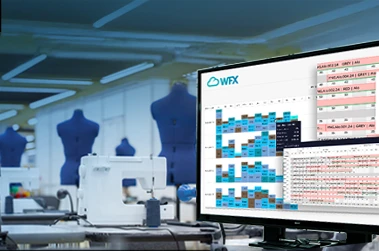1. Quick And Seamless Software Integration
Everyone wants a beautiful, user-friendly product, but when it comes to exchange formats, data management and overall integration, not all systems are created equal. Most industries use specific software programs for product development processes – like CAD, Sketch Up, Adobe Suite, and so on. These may be similar in certain industries like apparel, outdoor gear, furnishing, food & beverage, cosmetics—where same or similar integrations can do the job.
What you need to look for is a solution that lets you cross-manage files across all relevant formats to avoid file conversion delays. This should be as easy as a drag and drop!
2. Personalized Data Intelligence & Management
Another reason to use a industry-specific PLM systems is to be able to find data quickly and easily. Less time spent on product data management (PDM) and data entry means more time to work on creative work. If you work in a consumer facing industry like apparel, food or footwear, you’ll want a visual-driven PLM where you can see and manage product data through pictures.
The PLM should give you multiple product views and information filters tailored to your industry’s requirements. Less time spent on searching for information means more time to focus on expansion and growth.
3. Updated With YOUR Industry’s Specific Trends
Having an outdated, rigid system that doesn’t meet your needs can be frustrating. The PLM provider you work with should know, understand and embrace industry-specific trends. For example, if you manufacture electronics, then your PLM system should have a provision to track the tech advancements in the industry. Similarly, if your domain is fashion, your PLM system should be able to keep track of fashion trends such as colors or styles.
In today’s scenario, where most enterprises are choosing to implement digital tools such as Artificial Intelligence (AI) and Internet of Things (IoT), the PLM system should embrace and stay updated as per industry-specific trends. A true PLM suite should offer scalability, flexibility and adaptability for whatever changes come next for your company or industry.
4. Aligned To YOUR Quality Control & Inspection Processes
The PLM system should be pre-fitted with your industry’s quality inspection and certification requirements. For example, the aerospace industry may require a manufacturer to keep a 2D paper drawing for every part produced. In the fashion industry, quality inspection might need to comply with specific tolerances for specific seams. If you’re using a PLM system that’s not tailored to your market, you may not have an efficient way to manage these documents or measurements.
If your company operates in multiple countries or regions, then chances are that you may also need to comply with different quality standards. The best PLM systems give you the flexibility to add new standards and workflows without disrupting the overall system.
5. Production Tracking Suited To YOUR Product Portfolio
A complex product portfolio can require more functionality than an average-sized company’s needs. The ability to spin up custom solutions around specific needs is one of the advantages of working with specialists in PLM over buying off-the-shelf software. For example, if your company makes one product, you may not need a complex materials management system. However, if you make multiple products, you will probably need cloud-based systems that can handle the variability in your business.
If you manage multiple factories spread across the country or around the globe, a solution built around physical inventory storage locations could get in the way of your operations.









